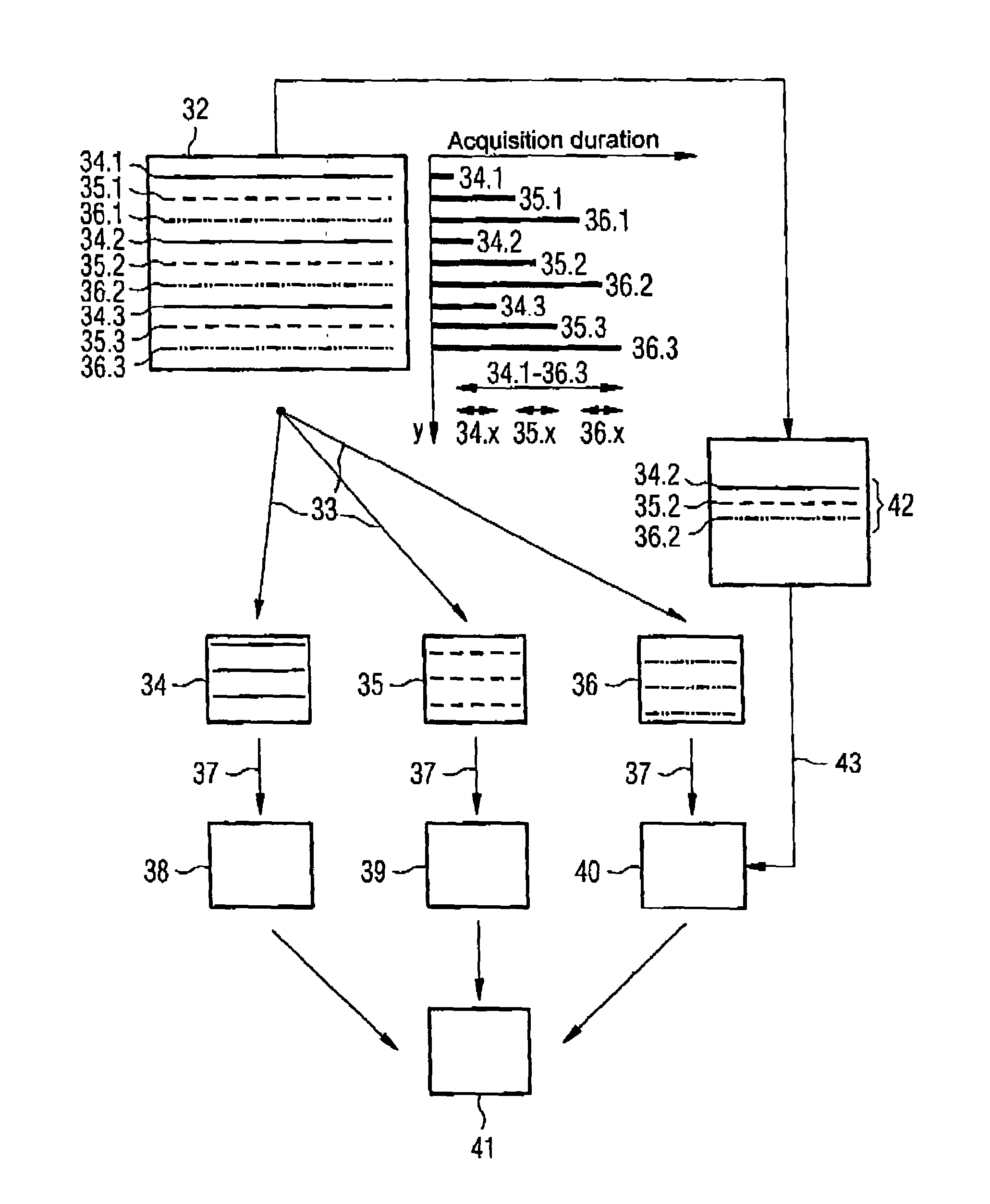MRI method and apparatus using PPA image reconstruction
a technology of ppa image reconstruction and magnetic resonance tomography, which is applied in the field of magnetic resonance tomography, can solve the problems of affecting the overall image quality, the acquisition time and the signal-to-noise ratio (snr) of the mrt image remain limiting factors for many applications of mrt, and the improvement of the overall image quality. the effect of the acquisition tim
- Summary
- Abstract
- Description
- Claims
- Application Information
AI Technical Summary
Benefits of technology
Problems solved by technology
Method used
Image
Examples
Embodiment Construction
[0036]FIG. 1 schematically illustrates a magnetic resonance imaging or (tomography) apparatus to generate a nuclear spin image of a subject according to the present invention. The basic components of the magnetic resonance tomography apparatus correspond to the design of a conventional tomography apparatus, with the exceptions and differences described below. A basic field magnet 1 generates a temporally constant strong magnetic field for the polarization or alignment of the nuclear spins in the examination region of a subject such as, for example, a part of a human body. The high homogeneity of the basic magnetic field required for the magnetic resonance data acquisition is defined in a spherical volume M into which the part of the human body to be examined is introduced. Shim plates made of ferromagnetic material are mounted at suitable locations to support the homogeneity requirements and in particular to eliminate temporally in variable influences. Temporal variable influences a...
PUM
 Login to View More
Login to View More Abstract
Description
Claims
Application Information
 Login to View More
Login to View More - R&D
- Intellectual Property
- Life Sciences
- Materials
- Tech Scout
- Unparalleled Data Quality
- Higher Quality Content
- 60% Fewer Hallucinations
Browse by: Latest US Patents, China's latest patents, Technical Efficacy Thesaurus, Application Domain, Technology Topic, Popular Technical Reports.
© 2025 PatSnap. All rights reserved.Legal|Privacy policy|Modern Slavery Act Transparency Statement|Sitemap|About US| Contact US: help@patsnap.com



